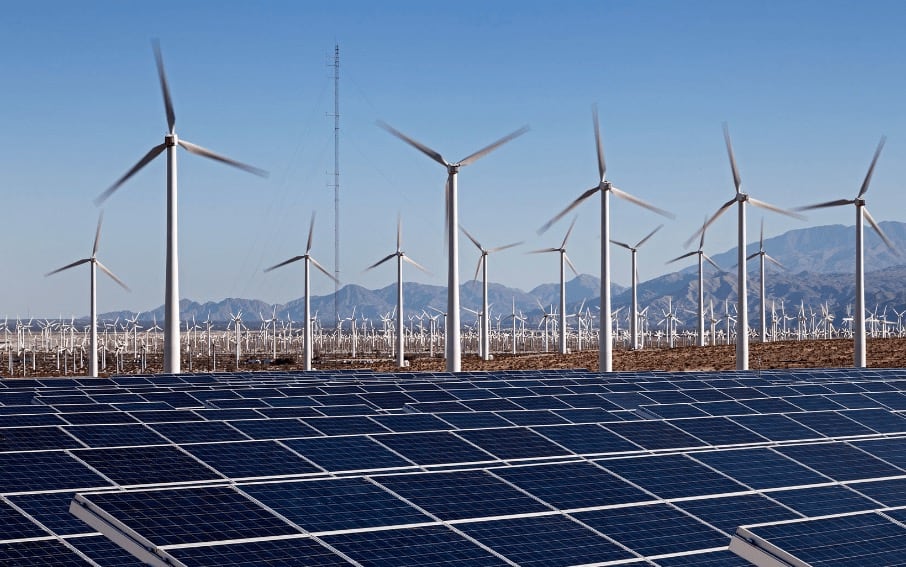Introduction
Renewable energy is made from resources mother-nature can replace like water, wind and sunshine. They are the best alternative sources of energy as they do not affect climate change neither do they cause environmental pollution. But, did you know Nigeria is one country rich in renewable energy which if harnessed can yield maximum interest on investment?
Benjamin Franklin once said, “An investment in knowledge pays the best interest.” That is, the knowledge of investing in renewable energy in Nigeria may just be surprisingly one that will pay a better interest financially and educationally.
The first part of this series will walk you through an overview of renewable energy in Nigeria as well as give you a bird’s-eye view on national and local policies involving renewables. The subsequent parts (2 & 3) will delve deeper into the “how to” invest and the challenges or risk such investment can bear in a developing country.
Read A-Z of investing in Renewal Energy – Part 2
Statistics
Nigeria is a country with an ever-growing population of about 180 million people and yet produces an estimate of 7,000MW of power primarily through fossil fuels (natural gas and oil). This is a challenging fact when compared to other countries. Based on the United Nations Population Division (UNDP) estimates; Algeria with a population of about 41 million, generates about 11,000MW; Egypt (95 million population) – 24,000MW; United Kingdom (65 million population) – 80,000MW; Germany (80 million population) -120,000MW, South Africa (60 million population) – 40,000MW and again Nigeria with 191 million population generates a paltry 4,500MW.
In a bid to restructure the power sector to pave the way in solving Nigeria’s energy crises, the country is turning to renewables as a sustainable source of energy. This consideration of an alternative source of energy is not only to meet the power demands of Nigerians living in rural areas who are underserved and unserved but also to limit the damage fossil fuels has inflicted on the country.
If renewables is the new path to solving an age long power crises in the country the next question will be; how rich is it in renewables? Nigeria is situated in West Africa with a land mass of 924,000sq.km approximately. When it comes to solar energy, it receives sunshine all year round being just above the equator. According to Ikponmwosa Oghogho et all (2014)[1] the sunshine duration averages 6.5 hours daily with an average flux of 5.55 kWh per square meter per day. This implies that Nigeria receives 4.851x 1012 kWh of energy per day from the sun. The solar radiation intensities range from 3.5-7.0 kWh per square meter per day increasing from the South to the North. This energy source could be available for 26% of the day (9.00am-4.00pm).
On the other hand, hydro resources (small and large hydropower) are estimated at 14,750 MW, wind energy potential of 150,000 terra joule per year (generated by an average wind speed of 2.0–4.0 m/s) and biomass at 144 million tonnes per year[2]. These facts and figures goes to show the large reserves of energy resources available, it is a clear indicator of the country’s potential which is yet to be fully tapped and maximized.
Policies
To meet the Nigerian Vision 20:2020 target of 40,000MW, generation capacity would require to be grown by 4.3GW every year. Therefore, every energy source will need to be considered, if this target is to be met. That is why several bodies and laws with incentives have been set up to promote investment by the private sector as the Government does not intend to go it on its own.
It recognizes the need to integrate renewables into its energy mix especially for rural areas that are not connected to the national grid. Rural Electrification Agency (REA) is a body set up for this purpose amongst several policies and regulations. Recently in June 2017, the Vice- President Yemi Osinbanjo inaugurated the Nigerian Renewable Energy Roundtable, a multi-stakeholder-platform created to champion the vision of renewable energy in rural areas.
In 2003, the National Energy Policy was approved by the Federal Government. It encourages the optimum utilization of the country’s energy resources, including renewables, for sustainable national development with the active participation of the private sector with articulated policies geared towards promoting biomass, wind and solar renewables.
In 2005, the Energy Commission of Nigeria in collaboration with the United Nations Development Programme (UNDP) drafted a Renewable Energy Masterplan from the National Energy Policy strategies. The masterplan provides a roadmap or activities that will enable the implementation of the policies on renewable energy, with targets/milestones and timelines in the short, medium and long terms.
The Nigerian electricity sector was liberalised by the Electric Power Sector Reform Act (ESPR) of 2005 and a strong regulatory institution, the Nigerian Electricity Regulatory Commission (NERC) was thereafter established. NERC has the general mandate to regulate the entire electricity sector in the country with regards to tariff setting and regulation, supervision of market rules, performance monitoring, and overseeing the orderly transformation of the power sector to a more competitive environment. Licenses are required for generation of 1MW aggregate and above at a site; and distribution of power of capacity greater than 100kW in aggregate at a site.
Renewable Electricity Policy Guidelines (REPG) 2006, was the federal government’s overarching policy on all electricity derived from renewable energy sources. The policy recognises the advantages renewable energy can bring to the system such as adding additional generation to the constrained system, enhancing the stability by mitigating local disruptions in supply and reduction of emission.
National Renewable Energy and Energy Efficiency Policy (NREEEP) 2015, encompasses all other prior policies sought to promote renewable energy and its efficiency. It aims at increasing the significance of renewable electricity generation activity nationally by providing for the development, operation and maintenance, and upgrading of new and existing renewable electricity generation activities.
Mini Grid Regulation 2017, this is the most recent and ongoing renewable policy that got approval in 2017 and is awaiting official gazetting. Its objective is to accelerate electrification to the rural areas that are underserved and unserved in order to achieve nation-wide electrification.
Incentives
Amidst the above mentioned laws and policies supporting renewables and encouraging its development, the government has set a target of generating a minimum of 2,000MW of electricity from renewables by the year 2020. In actualizing this vision the Nigerian government offers, amongst other things;
- a guaranteed price and priority access to the grid;
- a renewable energy Feed-In-Tariffs (REFiTS) that were included in the Multi Year Tariff Order (MYTO) II issued in June 2012;
- Power Purchase Agreements (PPA) based on plant life cycle of 20years and the guaranteed purchase of energy by the Bulk Trader and its third party collateral support that assures creditworthiness;
- tax incentives to manufacturers of renewable energy and energy efficient equipment and their accessories including a 5 year tax holiday from the date of commencement of manufacturing ; and a five year tax holiday on dividend income from investments on domestic renewable energy sources;
- excise duty and sales tax incentives for importers offering energy-efficient appliances and lightning; custom duty rebate for two years on importing equipment and materials used in renewable energy projects; and providing soft loans and special low-interest loans from the power sector development fund for renewable energy supply and energy-efficient projects;
- solar fund of One Billion Naira by the Bank of Industry to provide concessional financing to small and medium sized solar enterprises to encourage decentralization of solar energy.
All in all, Nigeria is a fertile ground for the development of renewables. A country that has all the natural resources and the legal framework for the sustenance and development of renewable energy. The mammoth need for this energy due to the current energy crises is surely one that has passed the test on why investors should be taking a deeper look and if peradventure this might be an undiscovered goldmine.
[1] Ikponmwosa Oghogho et all. Solar Energy Potential And Its Development For Sustainable Energy Generation In Nigeria: A Road Map To Achieving This Feat. International Journal of Engineering and Management Science I.J.E.M.S., VOL.5 (2) 2014: 61-67
[2] National Technical Working Group on Energy Sector. Report of the Vision 2020; 2009.
The opinions in the articles are for general information purposes only and do not form a legal relationship or be taken as legal advice. To explore legal advice, please consult your solicitor or feel free to get in touch with us directly.


